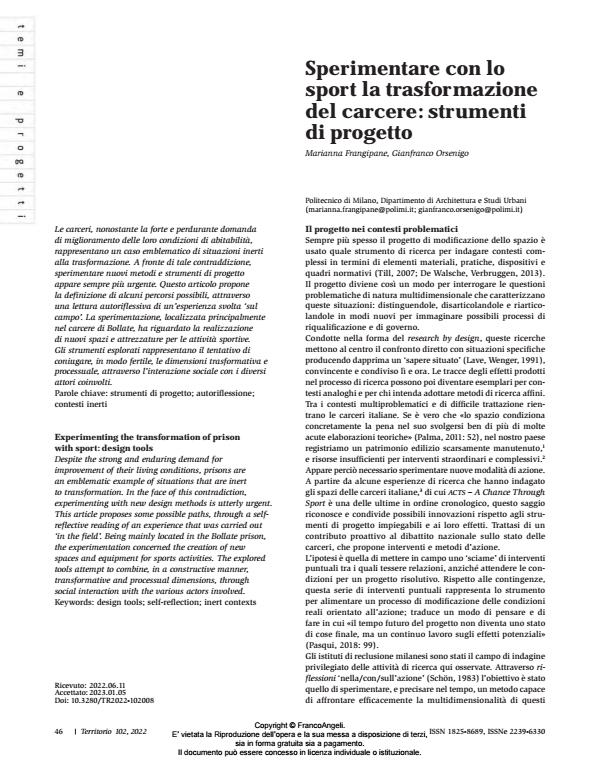Experimenting the transformation of prison with sport: design tools
Journal title TERRITORIO
Author/s Marianna Frangipane, Gianfranco Orsenigo
Publishing Year 2023 Issue 2022/102
Language Italian Pages 11 P. 46-56 File size 369 KB
DOI 10.3280/TR2022-102008
DOI is like a bar code for intellectual property: to have more infomation
click here
Below, you can see the article first page
If you want to buy this article in PDF format, you can do it, following the instructions to buy download credits

FrancoAngeli is member of Publishers International Linking Association, Inc (PILA), a not-for-profit association which run the CrossRef service enabling links to and from online scholarly content.
Despite the strong and enduring demand for improvement of their living conditions, prisons are an emblematic example of situations that are inert to transformation. In the face of this contradiction, experimenting with new design methods is utterly urgent. This article proposes some possible paths, through a self- reflective reading of an experience that was carried out ‘in the field’. Being mainly located in the Bollate prison, the experimentation concerned the creation of new spaces and equipment for sports activities. The explored tools attempt to combine, in a constructive manner, transformative and processual dimensions, through social interaction with the various actors involved.
Keywords: design tools; self-reflection; inert contexts
Marianna Frangipane, Gianfranco Orsenigo, Sperimentare con lo sport la trasformazione del carcere: strumenti di progetto in "TERRITORIO" 102/2022, pp 46-56, DOI: 10.3280/TR2022-102008